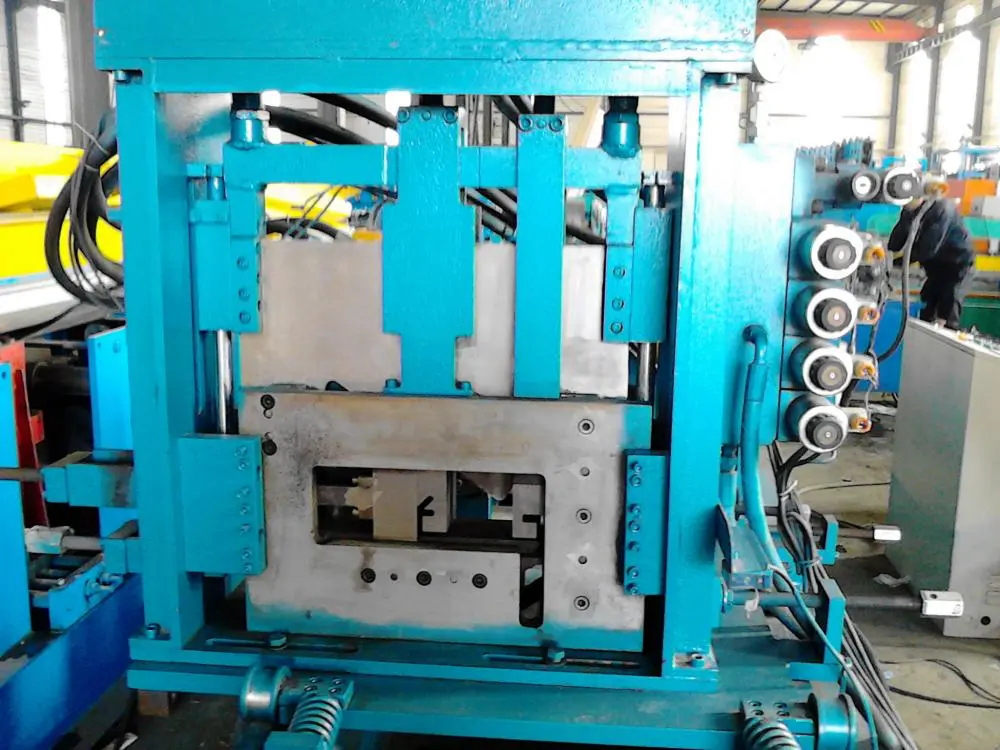
Introduction to Solar Strut Profile Roll Forming Lines
In the rapidly evolving landscape of renewable energy, solar power stands out as a sustainable and efficient means to harness energy from the sun. A pivotal component in solar energy systems is the mounting structure, particularly the solar strut profile, which provides the essential support for solar panels. The production of these structural components can be efficiently achieved through advanced processes such as roll forming. In this article, we will explore the significance of solar strut profile roll forming lines in manufacturing, their operational principles, and their benefits to the solar industry.
What is Roll Forming?
Roll forming is a continuous bending operation in which a long strip of metal is gradually shaped into the desired profile by passing it through a series of rollers in a roll forming line. This process is particularly advantageous for producing parts with consistent cross-sectional shapes, making it ideal for large-scale manufacturing of solar strut profiles. The versatility of roll forming allows for various materials to be used, including steel, aluminum, and other alloys, which are commonly utilized in solar mounting applications.
Components of a Solar Strut Profile Roll Forming Line
A solar strut profile roll forming line typically consists of several key components
1. Coil Feed System This system feeds the metal coil into the roll forming line. It ensures a continuous supply of material, enabling efficient production.
2. Roll Forming Station This is where the actual shaping takes place. A series of rollers is specially designed to gradually bend the metal strip into the required strut profile.
3. Cut-off Station Once the desired shape is achieved, the profiles are cut to specified lengths. This may be accomplished using saws or shears that operate in synchrony with the roll forming process.

5. Stacking System Finally, the finished strut profiles are automatically stacked for easy handling and transportation, which enhances production efficiency.
Advantages of Solar Strut Profile Roll Forming Lines
The use of roll forming lines for producing solar strut profiles offers numerous benefits
1. High Efficiency The continuous nature of the roll forming process allows for high-volume production, significantly reducing lead times and overall manufacturing costs.
2. Material Optimization Roll forming utilizes the entire width of the metal strip with minimal waste, making it a cost-effective solution for producing solar profiles.
3. Consistency and Quality The automated nature of the process ensures that each strut profile produced maintains tight tolerances and high-quality standards, which is essential for structural integrity in solar mounting systems.
4. Versatility Roll forming lines can be easily adjusted to produce different profiles, making them suitable for various solar applications, including ground-mounted, rooftop, and tracking systems.
5. Durability The robust construction of the profiles allows them to withstand harsh environmental conditions, ensuring long-term reliability for solar installations.
Conclusion
As the demand for renewable energy sources continues to grow, the role of manufacturing technology, specifically solar strut profile roll forming lines, becomes increasingly crucial. These lines not only enhance the efficiency and quality of production but also contribute to the sustainability of the solar industry by optimizing material use and reducing waste. As innovations in roll forming technology evolve, they will likely further improve the performance and reliability of solar mounting structures, ultimately assisting in the global transition towards cleaner energy solutions. The future holds great promise for the integration of such advanced manufacturing processes in the solar sector, driving forward the vision of a more sustainable and energy-efficient world.